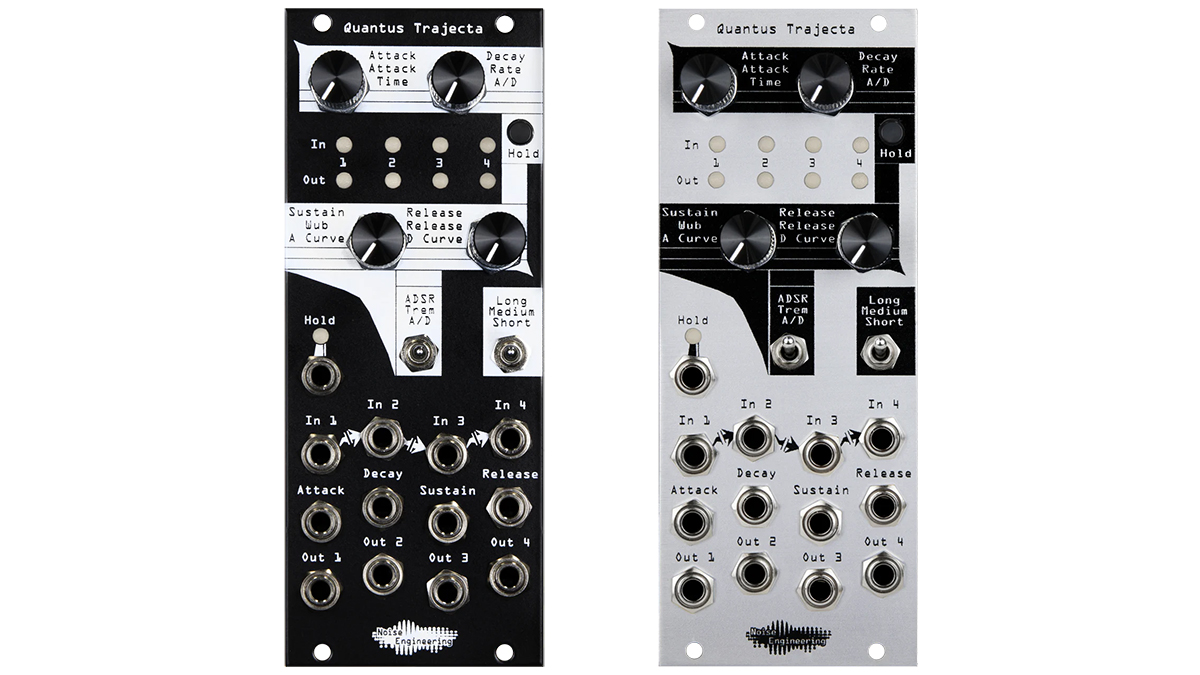MusicRadar Verdict
Quantus Trajecta takes an almost utilitarian module and turns it into something exciting and far more than the sum of its parts.
Pros
- +
Intuitive and simple controls.
- +
Easy to keep multiple voices in sync.
- +
Solid, road-worthy build quality.
Cons
- -
Might be tight in the shallowest of skiffs.
MusicRadar's got your back
Noise Engineering Quantus Trajecta: What is it?
Noise Engineering has quite the array of Eurorack modules these days but always seems to find new ways of working and performing. Quantus Trajecta is no different and, although many envelope generators exist, it has found a wonderfully fun and playable way to produce and control envelopes.
The 10hp, 23mm deep, module is small enough to fit most rigs but capable enough to suit the largest, as it’s polyphonic in nature, with four channels of output. Build quality is excellent as is to be expected. Noise Engineering doesn’t mess around and all its modules feel built for a touring musician.

Noise Engineering Quantus Trajecta: Performance and verdict
What makes Quantus Trajecta special is not simply its polyphonic output but its playability. You could use it to provide envelopes for a polyphonic setup for sure and it excels at that. The four channels are normalled, so keeping everything in sync is child’s play.
You could be more experimental, however, and send envelopes to different places, and better yet, Quantus Trajecta is fully CV controllable, so patch in a gate/trigger sequencer or a clock divider and things become really exciting.
Then there are the envelopes themselves. Quantus Trajecta operates in three modes. First up is a typical ADSR mode, offering a really lovely exponential curve which, especially when driving a polyphonic voice, can produce some very pretty pads.
There’s an AD mode which feels great for basslines and snappy leads, then the more unusual trem mode. This can do slowly evolving modulation through to almost ratchet-like effects and adds a level of versatility you don’t often find on an EG module. All three modes share a toggle switch for setting the speed range which is fine-tuned by the A and R knobs.
Lastly, there’s the hold button (also CV controllable). A press of this locks the envelope output at its current state, resuming when the button is released. In a live situation, this can aid in building tension for a drop or adding some manual excitement to a track. Quantus Trajecta is a fine tool for performance and studio use.
Want all the hottest music and gear news, reviews, deals, features and more, direct to your inbox? Sign up here.
MusicRadar verdict: Quantus Trajecta takes an almost utilitarian module and turns it into something exciting and far more than the sum of its parts.
Noise Engineering Quantus Trajecta: Hands-on demos
Noise Engineering
Noise Engineering Quantus Trajecta: Specifications
- KEY FEATURES: Four channels of envelope, three envelope modes, rig-friendly 10hp.
- CONTACT: Noise Engineering
